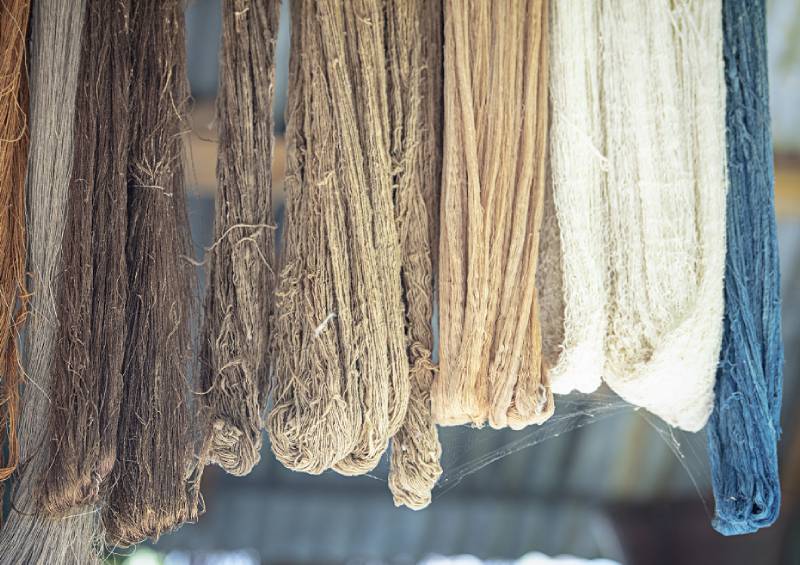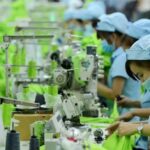Fashion Supply Chains Face Challenge From Sustainability Regulations

As we approach the end of this decade, it has become imperative for many of the world’s largest fashion brands to significantly enhance their utilization of raw materials with a lower environmental footprint. This shift is necessary to align with forthcoming sustainability regulations and to meet ambitious decarbonization targets.
However, there is a growing concern that the fashion industry may soon confront a shortage of key sustainable raw materials such as recycled polyester and regeneratively farmed cotton. A recent analysis conducted by the Textile Exchange, along with consulting firms Boston Consulting Group and Quantis, underscores this issue. If brands fail to make substantial investments and commitments to develop more eco-friendly raw materials, the industry could face a significant deficit of 133 million tonnes by the year 2030. This scenario would introduce new business risks.
The underlying problem is that the fashion industry will soon encounter a surge in government regulations related to sustainability. It is expected that more than 35 new pieces of legislation linked to sustainability will be enforced globally by 2027. These regulations will impact various aspects of garment production, design, marketing and disposal, further intensifying the pressure that stems from the industry’s self-imposed environmental targets to transition to raw materials aligned with climate objectives.
While the supply of lower-impact raw materials is projected to reach 30 million tonnes by 2030, a 30 per cent increase from 2021, the demand is expected to grow at a much faster pace. This growing demand-supply disparity can be attributed to several factors.
Conventional raw materials are deeply entrenched in the industry due to existing supply chains and pricing structures that support their production at scale. Altering this system necessitates considerable time and investment on multiple levels. For example, transitioning a farm from conventional to organic practices typically takes about five years. Incorporating regenerative practices, which is the industry’s latest buzzword, adds complexity as there is still a lack of clear definitions and measurement standards for what “regenerative” entails. Additionally, upfront investments are required to develop manufacturing capacity for new materials and innovations in textile-to-textile recycling.
The consequence of these factors is that lower-impact materials are generally more expensive than their conventional counterparts, and the long-term aspirations to increase their supply are currently at odds with the near-term economic reality favouring low-cost, readily accessible options. While some major brands, such as H&M Group and Inditex, are investing in lower-impact materials and making commitments to help drive market change, it is not enough to incentivize the majority of raw materials suppliers to embrace the risks involved in altering their operational practices.
These tensions are already evident in the challenges facing businesses attempting to introduce new materials to the market. For example, Renewcell, a Swedish textile recycler, recently replaced its CEO after announcing lower-than-expected sales, causing a sharp decline in its share price.
The risks for the fashion industry extend beyond reputational damage. The forthcoming wave of legislation will come with financial costs for non-compliant companies, including fines and fees for textile waste disposal, which are likely to be higher for materials with a greater environmental impact. Brands may also face barriers to accessing certain markets if they cannot demonstrate that their materials align with the new rules. In the European Union, which is leading efforts to strengthen oversight of the fashion industry, this situation could put up to 8 per cent of a brand’s earnings before interest and tax at risk.
On the other hand, brands that proactively secure access to lower-impact raw materials and comply with tougher regulations could see a significant increase in net profits. However, the fashion industry, which has largely relied on voluntary standards and initiatives for sustainability, has a historically poor track record when it comes to compliance and delivery.
Moreover, the fashion industry is increasingly vulnerable to the impacts of frequent and severe weather extremes, which pose a threat to traditional supply chains. Currently, these externalities are not factored into the cost of doing business, but failing to build resilience could ultimately prove more costly than investing in lower-impact materials today.
To address these challenges, as regulations and companies’ commitments drive the industry toward reducing its environmental impact, supply chain relationships will become pivotal for brands. Companies that provide suppliers with long-term commitments enabling them to invest in expanding the supply of lower-impact materials will benefit in the long run. Additionally, there is a need to enhance brands’ understanding of the origins of their materials and establish clear strategies to support climate goals. These changes must involve various departments within organizations, with sourcing teams and senior executives fully endorsing long-term goals that may take time to yield results and may not offer immediate marketing benefits.















